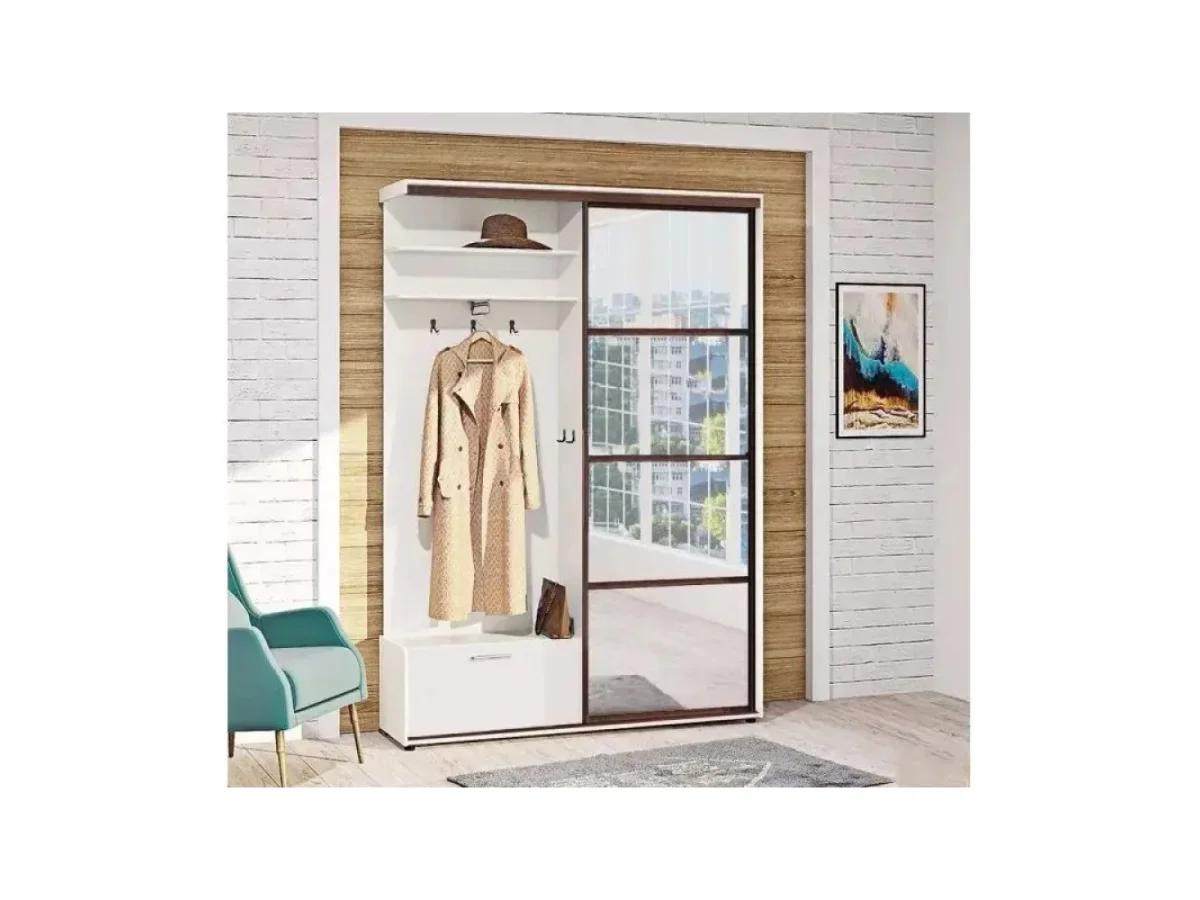Sliding hallways will help when space is at a premium
Depending on the apartment's layout, the space immediately adjacent to the front door can have varying dimensions, so the possibilities for accommodating various pieces of furniture can vary dramatically. The greatest problems arise in multi-story buildings in older urban neighborhoods built in the mid-20th century during a period of rapid urbanization, when residents arriving from the provinces to work in new factories experienced a dire need for housing. To accommodate as many of these residents as possible, building contractors had no choice but to minimize the floor area allocated per family member. For this reason, in many apartments in these buildings, the distance between parallel walls immediately behind the front door is often no more than one meter, making it difficult to even walk in this narrow space, let alone change clothes daily, especially several times a day. On the other hand, doing so in interior rooms also causes some discomfort, so attempts are being made to install dressing rooms precisely where they would normally be located. Even a simple coat rack with loops for hanging coats and a small shoe cabinet attached to the wall can make everyday life much easier for household members, but the aesthetic impression it creates is anything but pleasant. It's much better to use a hanging rack for this purpose whenever possible sliding hallways, specially developed by developers of new models from leading Ukrainian furniture factories who understand all the intricacies of the difficulties that users encounter.
Their efforts are aimed at relieving consumers of the many difficulties they face in achieving maximum comfort in their home environment by purchasing one model or another from a wide selection of ready-made products. In particular, sliding-door hallways help address the following:
They provide all the functionality needed for a quick change of clothes, thanks to their ample compartments for organizing all necessary items. Outerwear hangs on a horizontal bar, preventing individual items from touching or becoming wrinkled during storage. Shoes are stored on a dedicated shoe cabinet, providing ample space for boots, shoes, sneakers, and slippers. Special shelves are provided for hats and light clothing, and pull-out drawers hold accessories for grooming and personal appearance, which mirrors on the front of the doors allow you to assess from head to toe before heading out.
Thanks to the presence of the latter, not only does it make it easier to take care of your appearance, but it also makes it easier for neighbors passing by the staircase to get an impression of the interior in the part of the apartment that is accessible to them when they look through the half-open door.
In very narrow hallways, using hinged doors becomes virtually impossible, as when open, they almost completely block the existing passageway, and in critical conditions, even that space is insufficient to fully open. Lateral sliding elements of sliding structures effectively eliminate this problem without creating any additional inconvenience for the homeowners.
If the corridor is so narrow that even the sliding hallways do not fit in it, there is no better option than to resort to replacing them with simpler analogues.
Replacements for sliding hallways
Among the available alternatives to hallway wardrobes, two items deserve special attention, as they can also prove useful for furnishing offices and public spaces, as the organizations that own them are rarely interested in wasting budget funds.
Dressing rooms
Very simple in design dressing rooms They can be made of wood or constructed entirely from sections cut from steel profiles. They are characterized by their low cost, high reliability, and open design for visibility and access, making them extremely useful for both the administration of various institutions and for single residents who are not overly concerned about their image.

Write a comment